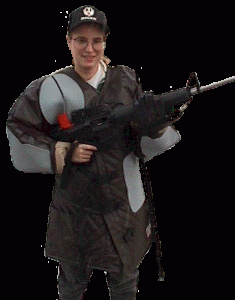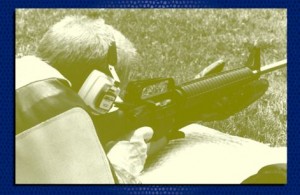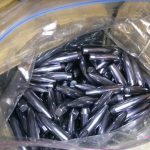A lot of the information available to the beginning shooter is very similar to the information available to the beginning golfer. A lot of time is spent dissecting the sport into its fundamental pieces. The whole is the sum of the parts. The discussion has a tendency to become very “technical”. Fundamentals are difficult to express as a whole, so in an attempt to find some method of explanation, the whole is expressed in terms of the some of the parts. This is oftentimes necessary due to the complex nature of the activity. This is also due to the complex nature of the individual who is trying to express the method.
Also, most of the information available is very advanced. I think it is difficult for advanced levels to appeal to the beginner tendency. Do you think David Tubb remembers what is like to learn the basics? Probably not…
Using golf as an example, (I am sure there are plenty of you out there who have attempted to master this extremely difficult game) most of the information available to the masses are in the terms of books, videos, magazines (the worst), and personal instruction. Most of the input for the mass media comes from two sources, journalists and professional athletes. Journalists are journalists, they are what they are, people trying to make a living filling the pages of some material to either sell advertising or books and videos. Professional athletes, on the other hand, are by all practical standards super-human in some ways. As I see it, you might as well ask a bird to explain how they fly.
“Well, you just start flapping”.
It is funny to me that golf is taught the way it is. Can you imagine teaching your little boy to throw a baseball the way that you teach someone to hit a golf ball?
“Now place your hand on the ball and create a neutral position. Turn you hips 45 degrees and your shoulder 90 degrees while bringing your arm back to the perpendicular position. Release should be a pronation of the wrist through the complete breaking of the wrist, etc….”
The other dads would look at you like you were nuts!
 Any normal Dad would say “just throw it here son”. This has worked for thousands of years. If the first throw was poor he would say, “I’ll bet you can’t throw that ball over the fence, over the house and so on…”. I have tried this approach to personal instruction and found it to be much more rewarding to the student. This is the only way to teach the one great fundamental-“feel”. Humans “feel” things. “What does that feel like?”
Any normal Dad would say “just throw it here son”. This has worked for thousands of years. If the first throw was poor he would say, “I’ll bet you can’t throw that ball over the fence, over the house and so on…”. I have tried this approach to personal instruction and found it to be much more rewarding to the student. This is the only way to teach the one great fundamental-“feel”. Humans “feel” things. “What does that feel like?”
Pick up any golf instructional book and tell me that isn’t what you see. This goes all the way back to Hogan’s “The Five Fundamentals of Golf”. Analysis paralysis seems to be the order of the day. I am trying to create some very simple ideas that the beginner can use to break position shooting into its basic fundamentals. I think that learning what you do well and what you do poorly can better focus what is important and what isn’t. I know, for me, the “truth in the x-ring” has been a slap in the face. I thought I was much better than I actually am. Also, one might find that their weaknesses could be easily overcome with focused practice.
I have found that the greatest ally to athletic instruction is distraction. The teacher must create an atmosphere, or approach that hides the fact that student is actually learning. The teacher has to be smarter than the student. The student must be fooled into learning. It is my job to know the ultimate goal of the teaching, but it is unimportant that the student be aware, at least in the beginning. This is the “Mr. Miyagi” approach. You know, “Wax on, wax off”. The student is learning the fundamentals without even fully realizing it.
 The problem for a beginner is to know what needs to be practiced. There are too many variables to swallow in one gulp. In other words, what are my strengths and what are my weaknesses? What are the perceived flaws, and what are the real flaws. Highpower shooting is like golf in that we rarely “guess” what the real problem is. We usually are in pursuit of dead ends. I get this a lot from my inexperienced partners and myself. A bad day will have you second-guessing everything about your method. New loads get tried, new guns get bought, more “practice” is promised. When none of the fixes seem to work, positive progress stops and frustration begins.
The problem for a beginner is to know what needs to be practiced. There are too many variables to swallow in one gulp. In other words, what are my strengths and what are my weaknesses? What are the perceived flaws, and what are the real flaws. Highpower shooting is like golf in that we rarely “guess” what the real problem is. We usually are in pursuit of dead ends. I get this a lot from my inexperienced partners and myself. A bad day will have you second-guessing everything about your method. New loads get tried, new guns get bought, more “practice” is promised. When none of the fixes seem to work, positive progress stops and frustration begins.

![On Teaching and Shooting… A lot of the information available to the beginning shooter is very similar to the information available to the beginning golfer. A lot of time is spent dissecting the sport […]](https://theurbanrifleman.com/wp-content/uploads/2013/04/IMG_14451-620x300.jpg)



